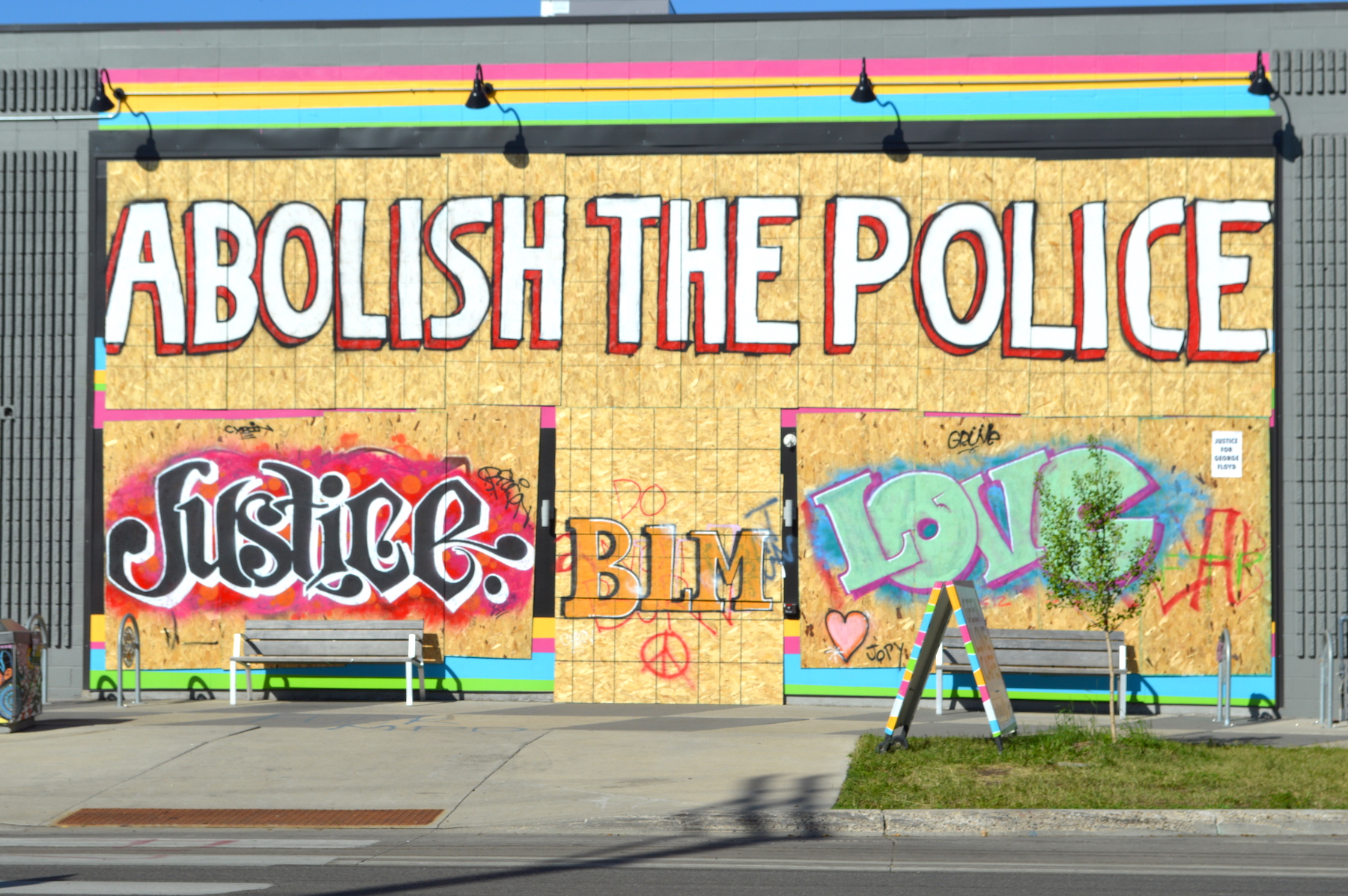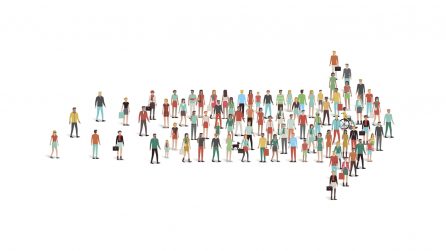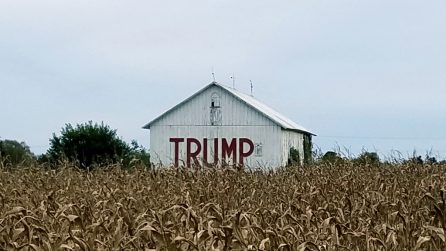The combination of despair at the U.S. government’s refusal to address the COVID-19 pandemic and the rage at the police murder of George Floyd has triggered the largest movement in US history. This movement has achieved a major win for the anti-racist struggle: the mainstreaming of abolitionists concepts.
But what is abolitionism?
Thanks to the uprising, everyone wants to understand it. Meanwhile, the individuals that have been developing these politics want to shape the discussion before it is co-opted by conservative elements.
I confess that the topic of abolition came up a few years ago, and I dismissed it because my vision of socialism requires defending the revolution with force, which I assumed the abolitionists would oppose. But that’s the thing: I haven’t heard the abolitionists state how we get rid of the carceral state. They might oppose this idea, they might not?
With that in mind, I’d like to contribute to the discussion on abolition. It is a question that confronts the state and is bursting with revolutionary possibility. As a revolutionary socialist, I’d like to add our perspective on abolishing the entire carceral state — once and for all.
U.S. Abolitionism
The Past
Abolitionism has been a part of U.S. history since the Indigenous communities resisted extermination from their lands and the enslaved Africans resisted their chains. From the start, there was resistance to a state that enforced imperialism and slavery. From the start, there was abolitionism.
Abolitionism as a mass movement coalesced around slavery. This struggle was a confrontation with a state that developed and relied on anti-Black racism to enforce racially-defined chattel slavery, which was the engine of world capitalism. Slavery abolitionists helped shift public opinion, playing a crucial role in the impetus for the Civil War.
The prize of the Civil War was The Reconstruction government. While the Reconstruction era ushered in major wins for Black democracy in the South, convict leasing, the rise of the KKK, and the withdrawal of the federal government’s support introduced new challenges. The state installed Jim Crow in its place, setting off a new abolitionist confrontation that would produce the Civil Rights Movement. While this did not trigger a revolution, it did open the space for the next phase of Black struggle (i.e., The Black Panthers, The Detroit Revolutionary Union Movement, etc.), as well as the Anti-war movement, Women’s Rights, Gay Liberation and so much more.
Since then, there have been several movements that rose and fell. My intention isn’t to give a full history of abolitionism, rather just the highlights in order to point out that each time there has been Black struggle, it has always:
- been directed at the core of the state (the bodies of armed men)
- triggered revolutionary, or near revolutionary, moments
The Present
Modern abolitionism continues to build off of the history of resistance against the state with the end goal of abolishing it. But modern abolitionism uniquely focuses on two things:
- distinguishing between crime and harm
- prefiguring systems of popular justice
Crime v. Harm
The bulk of abolitionist discussion is focused on distinguishing between crime and harm. Abolitionists recognize that criminal laws are set up to deliberately target Black and Brown communities, regardless of whether or not the illegal crime is an actual harm (e.g., criminalizing drugs and sex work). Abolitionists also recognize that police and prisons don’t stop illegal activity.
The concept of crime is used to reinforce and produce racism by targeting Black folks and other oppressed communities, keeping them in prison and condemning them to poverty through the societal stigma and job repercussions of being labelled as “criminals.” Therein, manufacturing “proof” of the criminality of the oppressed is a vicious cycle, which is then used to justify extra funding for the carceral state.
In other words, targeting Black communities for imprisonment based on racist laws ensures that the popular imagination sees the Black community as criminal, legitimizing those ideas. This compliments the carceral marketing campaign that the police are intended to protect the masses from harm, and to rectify harms.
Popular Justice
The distinction between crime and harm raises the question: If the state isn’t going to resolve harm, can we do it for ourselves? Unlike the right-wing, which turns to vigilantism: abolitionism provides restorative and transformative justice (what I’ll label “popular justice”).
Popular justice is about identifying:
- who was harmed
- what needs emerge from the harm
- whose responsibility it is to address the harm
Popular justice aims not only to identify how the instance of the harm can be addressed (on a voluntary basis, unlike the adversarial prison system), but also what the underlying factors are that led to that instance of harm in an effort to prevent this harm from reoccurring.
As Mariame Kaba has pointed out, this approach to harm comes from Black, Brown and Queer feminists that did not want to call the police when they were harmed. They feared that calling the police would either ruin someone’s life, or end it. They also worried that the police would either ignore them or commit their own harm (citing rates of sexual assault by police and the possibility of being humiliated or brutalized by them in other ways).
This vacuum prompted the organic development of popular justice. As Kaba also pointed out, most of the people that seek popular justice would not call the police — even if there were no other alternatives. If not for abolitionist politics, they would simply suffer in silence. This prefigurative aspect of modern abolitionism is central to its attraction and dynamism.
State and Abolition
I’ve done my best to outline modern abolitionism. Next, I’d like to fill in what I see as missing from abolitionist politics via revolutionary socialist politics.
Lenin
I’ve attended various lectures on abolitionism since the uprising began. I noticed the absence of Lenin’s State and Revolution in those lectures. If abolitionism is about taking on the police, prisons, and all aspects of state violence: then we need to incorporate Lenin.
Without understanding why the state exists, it is impossible to understand how we abolish it once and for all.
Why Does The State Exist?
Classes develop as humans transition from agrarian to agricultural society. Classless societies that are collectively run, but barely allow people to subsist, move to class societies that are managed by a few who enjoy luxury, but can still provide subsistence for the many.
Over time, the few that started as organic leaders, and were given some luxury to refine that leadership, become hereditary leaders. To maintain this hereditary leadership and luxury, the few need violence against the many. They form bodies of armed men, which gradually become The State. As long as classes exist, exploitation exists, and a State is needed to enforce it.
Historic Opportunity
Whereas all previous class societies were limited by their productive ability, capitalism is the first society to create the potential of luxury for all, with the contradiction of limiting that potential by upholding the concept of private property.
Slave and Feudal societies only saw labor as something to squeeze. The focus was exclusively on managing labor by brutalizing and disciplining the slaves, serfs and other lower classes. Because of its competitive aspect, capitalism is the first society to try and rationalize labor and make it more productive..
This opens a historic opportunity: Capitalism creates workers that depend on each other to coordinate production. Capitalism also creates methods and technologies that scientifically allow luxury for everyone. In other words, capitalism creates a class that could democratically run the economy and abolish classes. If classes are abolished, then there would be no need for violence to maintain class exploitation, so the need for a state disappears too.
Abolitionist Road
This opportunity is not automatically guaranteed. To accomplish it, the workers have to overthrow the capitalist class and their system. Because the capitalists run The State, this will require violence and ultimately, revolution.
A successful revolution will require emergency defense against counter-revolution, since history has shown that when rulers lose power, they fight to the death to get it back. This defense means that the workers need their own state: their own defense against domestic and international counter-revolutionary violence. This phase of the revolution is Socialism.
But no revolution can survive in one country. Fortunately, history has shown that revolutions (just like capitalism) tend to spread. Think of the 1848 revolutions, or even the 2011 Arab Spring. As capitalists are overthrown around the world, it becomes easier to democratically rationalize the domestic and international economy. This means that both the decision making and luxury are shared out, eliminating classes.
As the threat of the counter-revolution disappears, as the economy is democratically run, as classes wither away, so does the need for The State. Humans begin to run society without violent coercion, relying instead on solidarity and habit. The phase of the revolution where The State disappears is Communism.
Communism could also be called Full Abolition: the highest stage of Socialism.
Closing Remarks
Each of the following subsections could easily be long papers by themselves. But I want to get some thought starters going for folks to consider, and either build out or tear down.
Why Combine Abolitionism and Marxism?
Abolitionism and Marxism need each other. Without one another, they both risk co-optation or irrelevance.
Through unification, Abolitionism is given direction. Without a Marxist understanding of The State, it is unclear why The State exists and how it could be destroyed.
Without the class analysis, it can be co-opted by liberals that will find ways to implement some Popular Justice without abolishing the police and prisons.
Otherwise, disjointed efforts will feed into an Anarchism that, while remaining true to a purist version of abolitionism, won’t be able to make full abolition a reality. Even if it could lead a successful revolution, Anarchism wouldn’t be prepared to defend it.
Marxism benefits from abolition as a reminder that we cannot just elect our way into the capitalist state and use it to build true socialism. As long as the capitalist state exists, it is the tool of the capitalists and will be used to repress the popular classes while sabotaging attempts at building socialism. Abolitionism is a reminder that we still need revolution.
Full abolitionism has to follow the path to communism or it won’t be possible.
Interpersonal Harm vs. Class Violence
Abolitionism identified the distinction between crime and harm. But I want to add the distinction between interpersonal harm and class violence.
Some abolitionists, such as the amazing Ruth Wilson Gilmore, have stated that we cannot use the carceral state to deal with the violence of groups like the police. But this only makes sense if we view state and fascist violence against the workers as equal to the violence of working class people among each other.
But if the state is a tool of class repression, and the fascists are voluntary deputies of capitalism, will they respond to popular justice?
The police are the direct tools of the capitalists. The capitalist’s tools can’t be reasoned with — they only exist to repress. The fascists are the non-state tools of the capitalists. They are ideologically committed to defending capitalism at all costs. Some might be reasoned with, but for the most part, they need to be physically dealt with.
This is why I think we need to jail the killer cops and fascists. If the capitalist state is meant to repress the popular classes, it makes sense for us to turn it on its head and use it to repress the capitalists’ tools instead.
Angela Davis stated that “Prisons do not disappear social problems, they disappear human beings.” She meant this as a reason for us to abolish prisons and I agree with that. But as long as the capitalist state and the fascists exist, we need to disappear them or they will disappear us.
We Keep Us Safe: Community Defense
As a final consideration, what would it mean to actually defend ourselves? In Chicago, the first week of the uprising included anti-Black violence in neighborhoods like Pilsen, Little Village and Bridgeport. In those neighborhoods, different forms of spontaneous community defense had to emerge. For example, community members formed the The Brown Squad for Black Lives, an organization that provides rapid response assistance for folks fearing racist violence, in Pilsen.
Community support organizations serve as important examples to learn from and expand on given there is a high likelihood the far-right will continue organizing. Alt-right groups may not be as organized in Chicago as they are in parts of Oregon and Michigan, but they still pose a significant threat to our city. Regardless, there are many lone-wolf racists that have become more emboldened to carry out violence in recent years. Both organized and unorganized right-wing violence are quickly becoming the norm, and we must consider how we begin building a network to keep each other safe now.
Most likely, this work could be started via neighborhood/ward organizations and localized mutual aid groups. These formations could be open to anyone interested in practicing solidarity, regardless of their political background (if any).
What I want to make clear is that abolitionism has a long and inspiring history in U.S. politics. It is a movement that fundamentally challenges The State, which means it is inherently revolutionary. Thanks to the uprising of 2020, revolutionary politics has re-entered mainstream U.S. discourse and presents us with tremendous opportunities. I also want to make it clear that socialists have a lot to learn from abolitionism, but we also have a lot to offer. We should proudly embrace abolitionism, fight for abolitionist demands, and help shape what abolitionism looks like. Especially because the permanent abolition of The State is the highest form of socialism.




